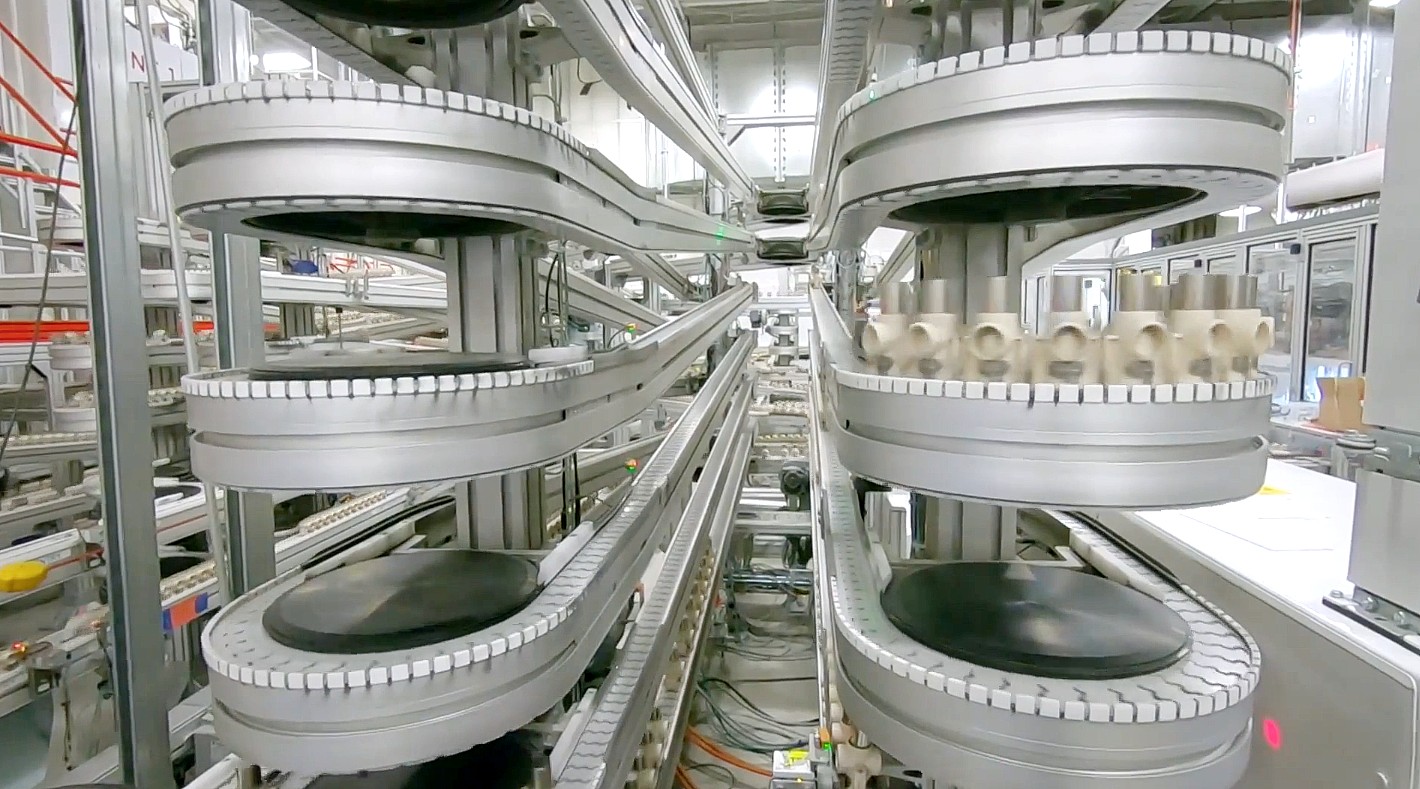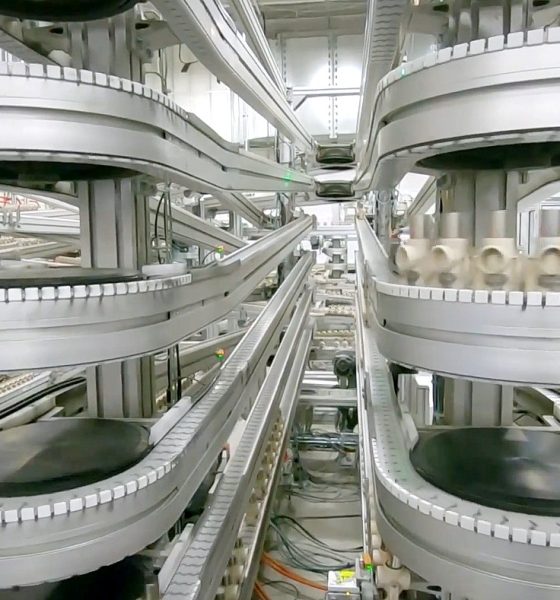

News
Tesla ‘Roadrunner’ cell leak hints that Battery Day will be more insane than expected
Tesla’s Battery Day has been hyped so much that the event will have to include something truly amazing to live up to its expectations. In the lead up to the highly-anticipated event, a leaked image featuring what is supposedly a cell from Tesla’s “Roadrunner” line has emerged. And if the leak proves legitimate, it would appear that Battery Day will not only meet expectations — it will be even more insane than expected.
The leaked image, which was initially published in a report on Electrek, featured a massive battery cell that was supposedly a product of the Roadrunner line. The publication noted that the image was sent through an anonymous source and confirmed by another independent source. From the get-go, it is evident that the cell is massive, closer in size to a supercapacitor than a traditional battery cell. Initial observations by battery enthusiasts online also point to some radical improvements that such a cell design would bring.
While Electrek’s sources have mentioned that the Roadrunner cell will feature roughly double the diameter of the 2170 cells that the electric car maker currently uses in the Model 3 and Model Y, Tesla enthusiast @_BRCooper, who is familiar with battery tech, has observed that one of the leaked images had the number “054” printed on its side. If this number represents the cell’s diameter, it would point to Tesla’s Roadrunner cells adopting a 54×98 form factor, which has 10x the volume of a 2170 cell.
As noted by Jordan Giesige of The Limiting Factor channel on YouTube, adopting a 54×98 form factor for its next-generation cells has numerous implications for the entire battery manufacturing process and the performance of Tesla’s vehicles as a whole. With the larger cells, Tesla could produce battery packs that have an order of magnitude fewer cells than before. This would result in the company only using 1/10 the number of rolls, cans, electrolyte fills, and welds compared to its current operations. Such a strategy opens the doors to massive cost reductions that could help bring down the prices of electric cars to a notable degree.
But regardless of its actual size, the design of the Roadrunner cell appears to be optimized and designed for a cell-to-pack drop-in setup. Interestingly enough, the leaked image of the Roadrunner cell seems to have a tabless electrode design, which Elon Musk has dubbed is “way more important than it sounds” last year. Provided that the Roadrunner cells are indeed inspired by Tesla’s tabless electrode patent, the new form factor could pave the way to more performance and further reductions in production costs.
What’s even more notable is that these improvements become possible with just the Roadrunner cell’s new form factor and design. Giesige, for his part, has noted that with the Roadrunner cell’s design and potential 54×98 form factor alone, Tesla may be able to close in on 300 wh/kg before making any significant changes to its battery chemistry. Elon Musk actually mentioned a 30-40% improvement from 250 wh/kg back in 2018, which translates to an improvement to 325-350 wh/kg. Musk’s prediction was considered fantastical by critics then, but as Battery Day approaches and leaks start to emerge about the event, it is starting to look more and more likely that 325-350 wh/kg is feasible.
Watch a feature on the Roadrunner battery cell leak in the video below.

News
Elon Musk’s Grokipedia surges to 5.6M articles, almost 79% of English Wikipedia
The explosive growth marks a major milestone for the AI-powered online encyclopedia, which was launched by Elon Musk’s xAI just months ago.

Elon Musk’s Grokipedia has grown to an impressive 5,615,201 articles as of today, closing in on 79% of the English Wikipedia’s current total of 7,119,376 articles.
The explosive growth marks a major milestone for the AI-powered online encyclopedia, which was launched by Elon Musk’s xAI just months ago. Needless to say, it would only be a matter of time before Grokipedia exceeds English Wikipedia in sheer volume.
Grokipedia’s rapid growth
xAI’s vision for Grokipedia emphasizes neutrality, while Grok’s reasoning capabilities allow for fast drafting and fact-checking. When Elon Musk announced the initiative in late September 2025, he noted that Grokipedia would be an improvement to Wikipedia because it would be designed to avoid bias.
At the time, Musk noted that Grokipedia “is a necessary step towards the xAI goal of understanding the Universe.”
Grokipedia was launched in late October, and while xAI was careful to list it only as Version 0.1 at the time, the online encyclopedia immediately earned praise. Wikipedia co-founder Larry Sanger highlighted the project’s innovative approach, noting how it leverages AI to fill knowledge gaps and enable rapid updates. Netizens also observed how Grokipedia tends to present articles in a more objective manner compared to Wikipedia, which is edited by humans.
Elon Musk’s ambitious plans
With 5,615,201 total articles, Grokipedia has now grown to almost 79% of English Wikipedia’s article base. This is incredibly quick, though Grokipedia remains text-only for now. xAI, for its part, has now updated the online encyclopedia’s iteration to v0.2.
Elon Musk has shared bold ideas for Grokipedia, including sending a record of the entire knowledge base to space as part of xAI’s mission to preserve and expand human understanding. At some point, Musk stated that Grokipedia will be renamed to Encyclopedia Galactica, and it will be sent to the cosmos.
“When Grokipedia is good enough (long way to go), we will change the name to Encyclopedia Galactica. It will be an open source distillation of all knowledge, including audio, images and video. Join xAI to help build the sci-fi version of the Library of Alexandria!” Musk wrote, adding in a later post that “Copies will be etched in stone and sent to the Moon, Mars and beyond. This time, it will not be lost.”
News
Tesla Model 3 becomes Netherlands’ best-selling used EV in 2025
More than one in ten second-hand electric cars sold in the country last year was a Tesla Model 3.

The Tesla Model 3 became the most popular used electric car in the Netherlands in 2025, cementing its dominance well beyond the country’s new-car market.
After years at the top of Dutch EV sales charts, the Model 3 now leads the country’s second-hand EV market by a wide margin, as record used-car purchases pushed electric vehicles further into the mainstream.
Model 3 takes a commanding lead
The Netherlands recorded more than 2.1 million used car sales last year, the highest level on record. Of those, roughly 4.8%, or about 102,000 vehicles, were electric. Within that growing segment, the Tesla Model 3 stood far ahead of its competitors.
In 2025 alone, 11,338 used Model 3s changed hands, giving the car an 11.1% share of the country’s entire used EV market. That means more than one in ten second-hand electric cars sold in the country last year was a Tesla Model 3, Auto Week Netherlands reported. The scale of its lead is striking: the gap between the Model 3 and the second-place finisher, the Volkswagen ID3, is more than 6,700 vehicles.
Rivals trail as residual values shape rankings
The Volkswagen ID.3 ranked a distant second, with 4,595 used units sold and a 4.5% market share. Close behind was the Audi e-tron, which placed third with 4,236 registrations. As noted by Auto Week Netherlands, relatively low residual values likely boosted the e-tron’s appeal in the used market, despite its higher original price.
Other strong performers included the Kia Niro, the Tesla Model Y, and the Hyundai Kona, highlighting continued demand for compact and midsize electric vehicles with proven range and reliability. No other model, however, came close to matching the Model 3’s scale or market presence.
News
Tesla Model Y Standard Long Range RWD launches in Europe
The update was announced by Tesla Europe & Middle East in a post on its official social media account on X.

Tesla has expanded the Model Y lineup in Europe with the introduction of the Standard Long Range RWD variant, which offers an impressive 657 km of WLTP range.
The update was announced by Tesla Europe & Middle East in a post on its official social media account on X.
Model Y Standard Long Range RWD Details
Tesla Europe & Middle East highlighted some of the Model Y Standard Long Range RWD’s most notable specs, from its 657 km of WLTP range to its 2,118 liters of cargo volume. More importantly, Tesla also noted that the newly released variant only consumes 12.7 kWh per 100 km, making it the most efficient Model Y to date.
The Model Y Standard provides a lower entry point for consumers who wish to enter the Tesla ecosystem at the lowest possible price. While the Model 3 Standard is still more affordable, some consumers might prefer the Model Y Standard due to its larger size and crossover form factor. The fact that the Model Y Standard is equipped with Tesla’s AI4 computer also makes it ready for FSD’s eventual rollout to the region.
Top Gear’s Model Y Standard review
Top Gear‘s recent review of the Tesla Model Y Standard highlighted some of the vehicle’s most notable features, such as its impressive real-world range, stellar infotainment system, and spacious interior. As per the publication, the Model Y Standard still retains a lot of what makes Tesla’s vehicles well-rounded, even if it’s been equipped with a simplified interior.
Top Gear compared the Model Y Standard to its rivals in the same segment. “The introduction of the Standard trim brings the Model Y in line with the entry price of most of its closest competition. In fact, it’s actually cheaper than a Peugeot e-3008 and costs £5k less than an entry-level Audi Q4 e-tron. It also makes the Ford Mustang Mach-E look a little short with its higher entry price and worse range,” the publication wrote.








